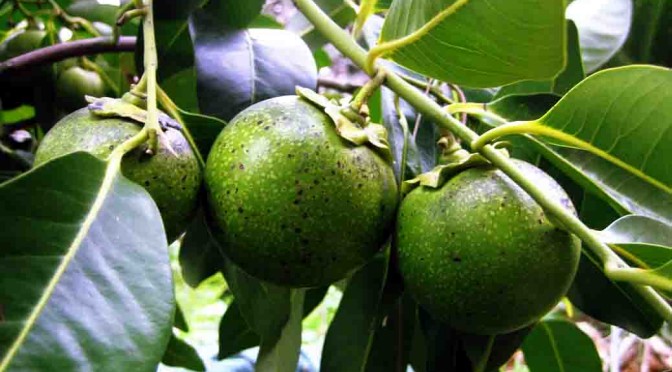If you like chocolate, you’ll be happy to know that in moderation, this tasty snack is actually good for you. No, this isn’t us just trying to find a way to justify our chocolate habit — there’s some actual science here! Whether you like the occasional Snickers bar or just can’t get enough of dark chocolate, here are some of the science-backed health benefits of cocoa.
First, a Disclaimer
Don’t rush out to the grocery store just yet. It’s important to know what type of chocolate to look for. Some types of chocolate have different health benefits, while others might not have any benefit at all.
First, make sure your chocolate is real instead of what is known in the industry as compound chocolate, which uses cocoa powder for chocolate flavoring but has no cocoa butter in the product. It’s easier for some manufactures — cocoa butter can be difficult to work with in large batches — but it isn’t good chocolate. If your ingredients show other forms of fat, like vegetable oil or soybean oil instead of cocoa butter, skip the candy bar.
Now, on with the show!
1. Chocolate Helps Your Heart
Chocolate can be a great tool to help you mend a broken heart, but it can also help keep your ticker healthy. One study, completed over nine years by Swedish scientists, found that one to two servings of dark chocolate every week helped to reduce the risk of heart failure in adults.
It wasn’t Hershey bars these individuals were eating, though — milk chocolate is so heavily processed that it doesn’t contain the kind of beneficial components dark chocolate does. Dark chocolate contains flavonoids, which help to protect the heart when eaten in moderation. These are the same antioxidants that are found in things like red wine, onions and tea.
2. High-Quality Tasty Nutrition
Believe it or not, a bar of high-quality dark chocolate can help you get a good portion of your daily recommended value for minerals like iron, magnesium, copper and manganese. A 100-gram portion also contains 11 grams of fiber.
Now, you don’t want to eat 100 grams regularly — that equals about 3.5 ounces, or 600 calories worth of chocolate — but even a small portion offers a host of nutritional benefits.
3. Candy Helps You Lose Weight
This might sound like we’re making stuff up, but it’s true: Dark chocolate in moderation can help aid weight loss. This is due to the fact that it is more filling than milk chocolate — due in part to that higher fiber content we mentioned a moment ago — and it also helps to lessen your craving for other sweet, fatty or salty foods that could make it harder to stick to your diet.
4. Keep That Cholesterol in Check
One of the main components in chocolate, cocoa butter, is a fat — and we’ve been told for years to avoid fat because it can be detrimental to our cholesterol levels. As it turns out, though, dark chocolate can help to both raise HDL — the good cholesterol — and lower total LDL in men with already elevated cholesterol.
The flavanoids in dark chocolate also help to prevent LDL from oxidizing. When bad cholesterol reacts with free radicals, it becomes oxidized and starts damaging tissues.
5. Pack It With Your Sunscreen
This is a benefit that only appears after you eat chocolate for a while — 12 weeks, minimum, according to researchers — but eating dark chocolate regularly can help to protect your skin from sun damage. This is no replacement for sunscreen, but regular chocolate consumption can more than double your minimal erythema dose or MED. This is just a fancy term for the amount of sun exposure it takes before you start to get sunburned.
The flavanoids in dark chocolate help to improve blood flow to the skin. They can also help increase skin density and overall hydration. Don’t skip your sunscreen, though — this might be an added level of protection, but it won’t keep you from getting sunburned during a day at the beach.
6. Not Just Good For The Body
In addition to helping with skin and heart health and cholesterol, chocolate has also shown signs of being good for your brain. Studies have shown that chocolate can help improve blood flow to the brain, which can help improve brain function. This benefit has been primarily studied in young adults. It has also been shown to help improve cognitive function in elderly patients who suffer from cognitive impairments.
7. Candy to Prevent Diabetes — Not as Crazy as It Sounds
People with diabetes are generally told to avoid candy and other sugars, but dark chocolate could actually be the key to help diabetic patients regulate their symptoms or prevent diabetes from developing at all. A small study out of Italy found that patients who ate dark chocolate every day for 15 days displayed reduced insulin sensitivity.
The amount of chocolate that was consumed during the trial equaled about 480 calories, so it’s important to consider the amount of chocolate you’re eating. However, if it can help reduce insulin sensitivity, it might be worth it to add a square or two of dark chocolate to your diet.
Chocolate isn’t as bad for you as your dentist or doctor might be telling you — eating high-quality dark chocolate in moderation can be a great way to improve your health over time. Just make sure you’re eating your chocolate in addition to a healthy diet.
